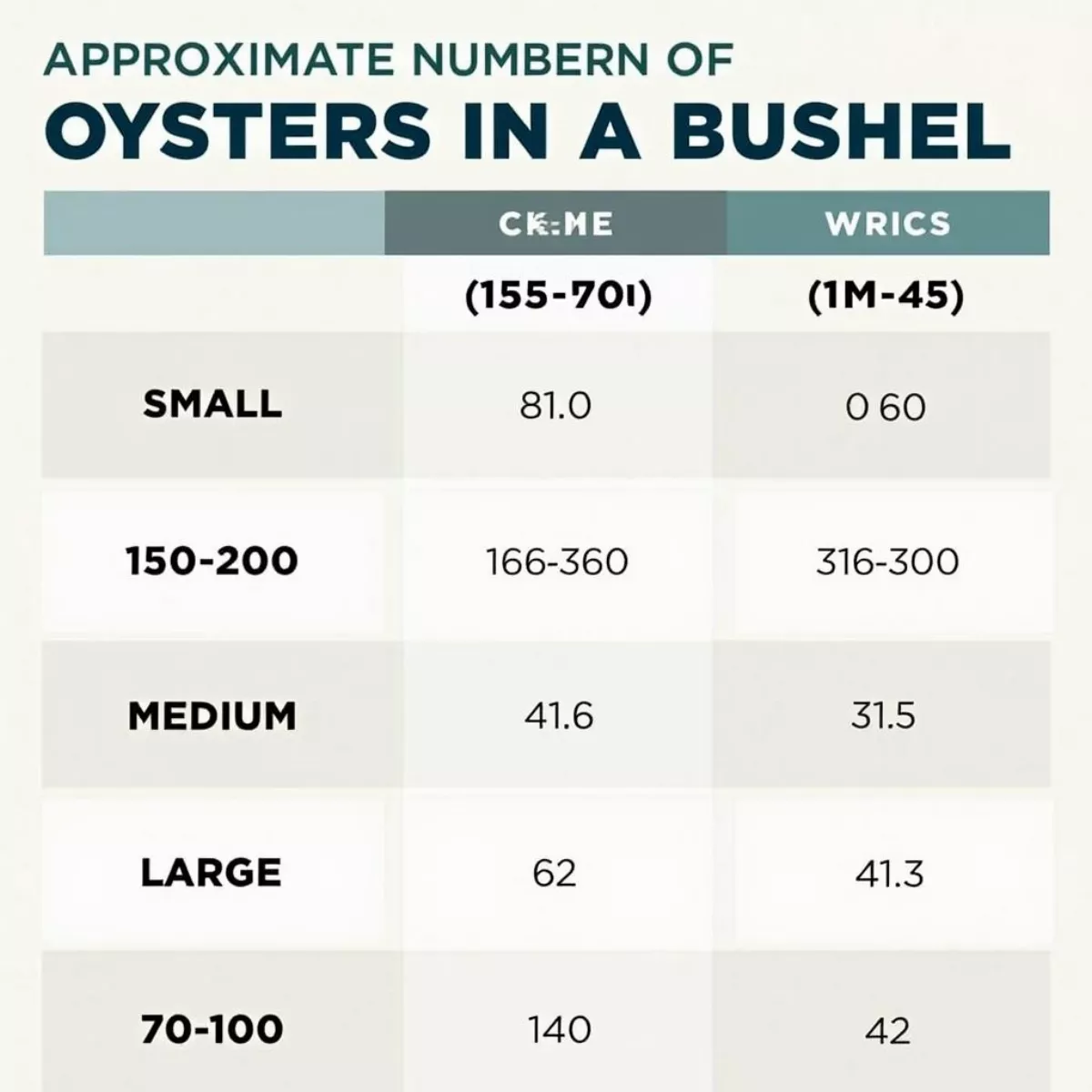Oysters are more than just a delicacy; they are an integral part of coastal cuisine and ecology. If you’ve ever wondered how big a bushel of oysters is and what that really means, you’re not alone. Many enthusiasts and casual consumers alike might feel confused about this measurement. In this guide, we’ll break down everything you need to know about bushels, their sizes, and just how many oysters you can expect to find in one.
What is a Bushel?
A bushel is a unit of measurement that is commonly used in agriculture to denote a volume of dry goods. It dates back to the Middle Ages and can be further divided into pecks and half-bushels.
Bushel Dimensions
- Standard Volume: 1 bushel = 8 dry gallons, approximately 35.24 liters.
- Physical Size: A bushel basket typically measures about 18.5 inches in diameter and 9.5 inches in height (46.99 cm x 24.13 cm).
Why do We Use Bushels for Oysters?
Using bushels for oysters provides a standardized method for exchanging and selling this popular mollusk. It offers clarity for both buyers and sellers about how much product is being traded or consumed.
How Many Oysters are in a Bushel?
The number of oysters in a bushel can vary depending on several factors:
- Size of Oysters: Smaller oysters take up less space than larger ones.
- Shucking Preference: Oysters sold in the shell will have different yields compared to shucked oysters.
General Estimate
Typically, you can expect to find about 100 to 200 oysters in a bushel. On average, larger oysters might yield closer to 100 while smaller oysters can yield upwards of 200.
| Oyster Size | Approx. Number per Bushel |
|---|---|
| Small | 150-200 |
| Medium | 100-150 |
| Large | 70-100 |
 Oyster Sizes in a Bushel
Oyster Sizes in a Bushel
Measuring Up: What You Need to Know
To wrap your head around how big a bushel of oysters is, here are some important points:
- Weight: A bushel of oysters typically weighs between 60 to 70 pounds (27 to 32 kg), depending on their size and moisture content.
- Storage: Safe storage practices are essential for keeping oysters fresh. Store them in a cool, dry place, ideally on a bed of ice.
Tips for Buying a Bushel of Oysters
- Buy Fresh: Always check the harvest date to ensure freshness.
- Check for Damage: Look for any broken shells or foul odors, which could indicate spoilage.
- Ask about Origin: Knowing where your oysters come from can enhance your culinary experience.
Culinary Uses for Oysters
Once you’ve got your bushel, what now? Here’s a few ideas:
- Raw Bar: Serve them chilled on ice with a variety of sauces.
- Grilled: Brush with garlic butter and grill on a barbecue.
- Soups and Stews: Use oysters for a delicious chowder or gumbo.
- Fried: Coat oysters in a seasoned batter and fry for a crunchy treat.
 Oyster Culinary Preparations
Oyster Culinary Preparations
Fun Facts About Oysters
- Nutritional Powerhouses: Oysters are rich in zinc, vitamin B12, and omega-3 fatty acids.
- Environmental Benefits: Oysters can filter seawater and contribute to cleaner oceans.
- Cultural Importance: Oysters have been consumed for centuries and are deeply tied to many coastal cultures.
Key Takeaways
- A bushel of oysters typically contains 100 to 200 oysters depending on size.
- A bushel weighs about 60 to 70 pounds (27 to 32 kg).
- Proper storage is essential for maintaining freshness.
- Oysters can be enjoyed raw, grilled, in soups, or fried.
FAQ
1. How much is a bushel of oysters worth?
 Oysters at a Seafood Market
Oysters at a Seafood Market
The cost of a bushel can vary significantly based on location, season, and oyster type. Prices can range from $30 to over $100.
2. How long can I store oysters in a bushel?
Properly stored oysters can live for a week or more. Always keep them cool and moist.
3. Can I freeze oysters?
It’s not recommended to freeze freshly shucked oysters as they may lose texture. You can freeze cooked oysters.
4. What’s the best way to clean oysters?
Rinse oysters under cold water with a brush to remove dirt and debris before cooking or consuming them.
5. Do oysters really taste different depending on where they come from?
Yes! Oysters reflect the flavor of their environment, including the salinity and nutrients in the water they grow in.
6. When is oyster season?
Oyster season varies by region but generally falls in the cooler months, from September to April.
7. How can I tell if an oyster is bad?
If the oyster shells are open and do not close when tapped, or if they smell foul, they should be discarded.
8. Are there different types of oysters sold in bushels?
Yes, there are many species, including Eastern, Pacific, and Kumamoto oysters. Each has a different flavor profile.
9. Can I buy a half bushel of oysters?
Yes, many suppliers offer half-bushel options for smaller gatherings or less frequent consumption.
10. What are the health benefits of eating oysters?
Oysters are low in calories and high in nutrients, like zinc, vitamin B12, and omega-3 fatty acids, promoting overall health.
Now that you’re equipped with knowledge about bushels of oysters, you can confidently explore the world of these marvelous mollusks! Whether you’re enjoying a night out at a raw bar or planning a seafood feast at home, understanding the ins and outs of oyster measurements will enhance your experience. Happy oyster tasting!

